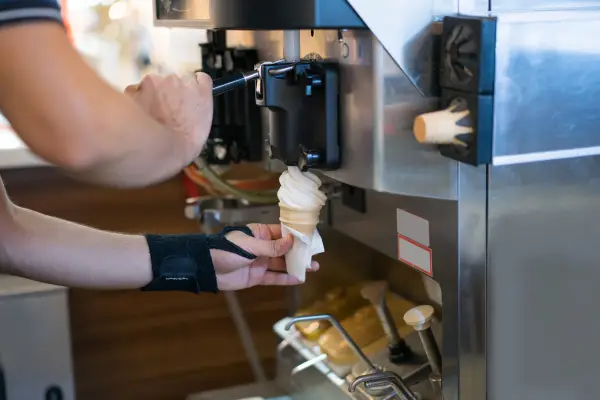What Food Can You Buy With SNAP?
Start EBT Application Here
You’re at the store, carefully choosing items to feed your family and stretch your budget. You pick out fresh veggies, a loaf of bread, maybe even some cereal. Then you wonder—can I add a few more things? You glance at the shelves and think, “What food can you buy with SNAP?” It’s a common question, and one that can get surprisingly complex depending on what’s in your cart.
EBT Credit Card Processing, or Electronic Benefits Transfer, is the system used for distributing benefits from SNAP (Supplemental Nutrition Assistance Program). While it’s a powerful support tool, it comes with clear rules—and knowing what qualifies is the key to making the most of your benefits.
What Food Can You Buy With SNAP?
The good news is that SNAP covers a wide variety of foods that form the foundation of a healthy diet. If you’re asking, “What food can you buy with SNAP?”—think essentials, not indulgences.
These benefits are meant to provide nutrition, not luxury, so understanding the categories of allowable items helps you shop smarter, avoid checkout surprises, and make the best use of your benefits.
What IS Eligible for Purchase with SNAP?
SNAP is designed to prioritize your basic, everyday food needs. Here’s a breakdown of the types of products that are covered:
The Essential Staples
- Fruits and Vegetables: Fresh, frozen, or canned options are typically covered, especially those without added sugars or syrups.
- Meat, Poultry, and Fish: Fresh or frozen is best—avoid processed versions like pre-cooked, breaded items which may not qualify.
- Dairy Products: Milk, cheese, and plain yogurt are standard. Watch out for dessert-style products that might cross into “treat” territory.
- Breads and Cereals: Whole grain options are encouraged. Heavily sweetened pastries or sugar-packed cereals? Likely not eligible.
- Seeds and Plants: Believe it or not, you can use SNAP to buy seeds and seedlings for growing your own produce. A great long-term investment in food security.
Understanding USDA Guidelines
The USDA maintains a specific and detailed list of what food you can buy with SNAP. They analyze every product based on ingredients, nutritional value, and processing level.
Important Factors They Consider:
- Nutritional Content: SNAP aims to support dietary health, so low-nutrient items may be rejected.
- Processing Level: Heavily processed snacks, even if “technically” food, often don’t qualify.
- Intended Use: Can the item be used to prepare a meal, or is it more of a treat or convenience product?
For example, a plain frozen vegetable mix is in. A frozen dinner with dessert, sides, and sauces? That’s often out.
What You CANNOT Buy with SNAP
While SNAP is flexible, certain categories of items are always excluded:
- Prepared Foods: Hot or ready-to-eat meals from delis or restaurants are not SNAP-eligible.
- Luxury Foods: Cakes, cookies, sodas, energy drinks, and candy bars are considered non-essential.
- Non-Food Items: Cleaning supplies, toiletries, paper products, or pet food are all excluded.
- Alcohol and Tobacco: These are strictly off-limits under all circumstances.
Understanding these exclusions is key to using your benefits without frustration.
Why SNAP Has Restrictions
SNAP is a government program focused on fighting hunger and improving health—not providing convenience foods or indulgences. That’s why if you’re asking “What food can you buy with SNAP?”, you’ll find the list geared toward nutrient-rich, meal-prep-friendly items.
The Purpose:
- Health Promotion: SNAP supports long-term health goals by encouraging nutritious purchases.
- Preventing Abuse: Clear boundaries ensure benefits go to essential food—not indulgences.
- Fair Use: Without guidelines, the system could be misused, ultimately harming the families it’s meant to help.
“Gray Area” SNAP Purchases
Sometimes products sit on the eligibility fence.
- Example: A protein bar with whole grains and low sugar might be okay. But a candy bar disguised as a snack? Probably not.
- Fancy Baked Goods: A single loaf of basic bread—yes. A triple-layer cake with icing—no.
Always check USDA guidelines or ask a store associate if you’re unsure. Many stores have systems in place to flag ineligible items before checkout.
Healthier Substitutes That Are SNAP-Approved
While you can’t use SNAP for soda or candy, that doesn’t mean you’re stuck with bland meals. Here are some ways to enjoy your favorites while staying within the guidelines:
- Frozen Fruit Bars: Look for those made with real fruit and low sugar.
- Whole Grain Crackers: A crunchy snack that might satisfy that chip craving.
- DIY Desserts: Use SNAP-eligible ingredients like frozen bananas and yogurt to make your own smoothies or “ice cream.”
These options keep your meals satisfying while respecting program rules.
Tips for Shopping Smart with SNAP
Knowing what food you can buy with SNAP is only half the story—budgeting is the other.
- Plan Ahead: Create a weekly menu and stick to a list. It reduces waste and improves nutrition.
- Use Unit Pricing: Compare cost per ounce or serving, not just total price.
- Start with Staples: Spend most of your budget on whole ingredients, not boxed mixes or snacks.
These habits help ensure your benefits last the whole month and support your health goals.
Need Help Understanding SNAP or EBT?
Navigating the SNAP system can feel overwhelming, especially if you’re new to EBT. That’s where EBT Application Services comes in.
We assist both individuals and retailers in understanding how to use and implement EBT effectively. Whether you’re wondering what food can you buy with SNAP or trying to integrate EBT into your business, we’ve got the answers.
Want personalized guidance or help applying? Contact us today for a free consultation!


